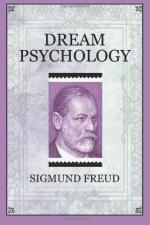The “tertium comparationis” in the comparisons just employed—i.e. the sum placed at our free disposal in proper allotment—admits of still finer application for the illustration of the dream structure. We can recognize in most dreams a center especially supplied with perceptible intensity. This is regularly the direct representation of the wish-fulfillment; for, if we undo the displacements of the dream-work by a process of retrogression, we find that the psychic intensity of the elements in the dream thoughts is replaced by the perceptible intensity of the elements in the dream content. The elements adjoining the wish-fulfillment have frequently nothing to do with its sense, but prove to be descendants of painful thoughts which oppose the wish. But, owing to their frequently artificial connection with the central element, they have acquired sufficient intensity to enable them to come to expression. Thus, the force of expression of the wish-fulfillment is diffused over a certain sphere of association, within which it raises to expression all elements, including those that are in themselves impotent. In dreams having several strong wishes we can readily separate from one another the spheres of the individual wish-fulfillments; the gaps in the dream likewise can often be explained as boundary zones.
Although the foregoing remarks have considerably limited the significance of the day remnants for the dream, it will nevertheless be worth our while to give them some attention. For they must be a necessary ingredient in the formation of the dream, inasmuch as experience reveals the surprising fact that every dream shows in its content a connection with some impression of a recent day, often of the most indifferent kind. So far we have failed to see any necessity for this addition to the dream mixture. This necessity appears only when we follow closely the part played by the unconscious wish, and then seek information in the psychology of the neuroses. We thus learn that the unconscious idea, as such, is altogether incapable of entering into the foreconscious, and that it can exert an influence there only by uniting with a harmless idea already belonging to the foreconscious, to which it transfers its intensity and under which it allows itself to be concealed. This is the fact of transference which furnishes an explanation for so many surprising occurrences in the psychic life of neurotics.
The idea from the foreconscious which thus obtains an unmerited abundance of intensity may be left unchanged by the transference, or it may have forced upon it a modification from the content of the transferring idea. I trust the reader will pardon my fondness for comparisons from daily life, but I feel tempted to say that the relations existing for the repressed idea are similar to the situations existing in Austria for the American dentist, who is forbidden to practise unless he gets permission from a regular physician




